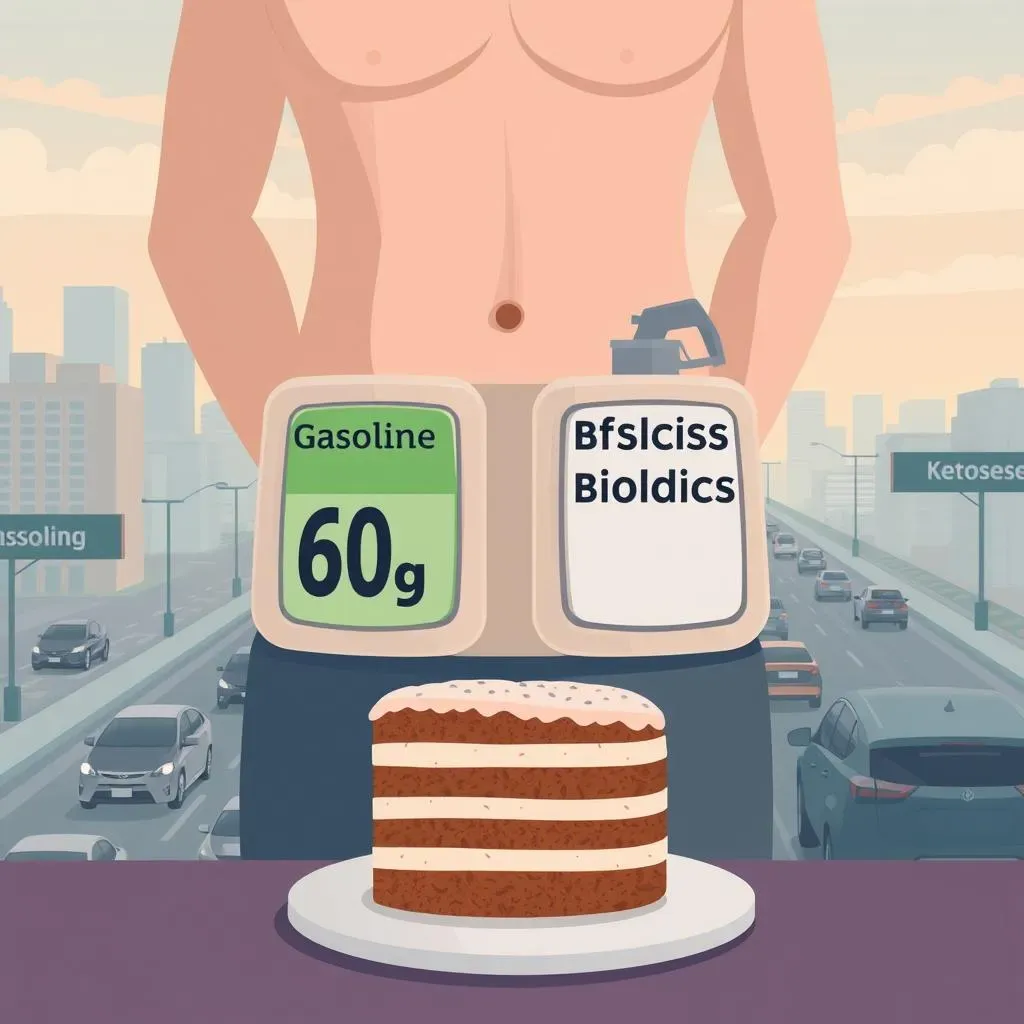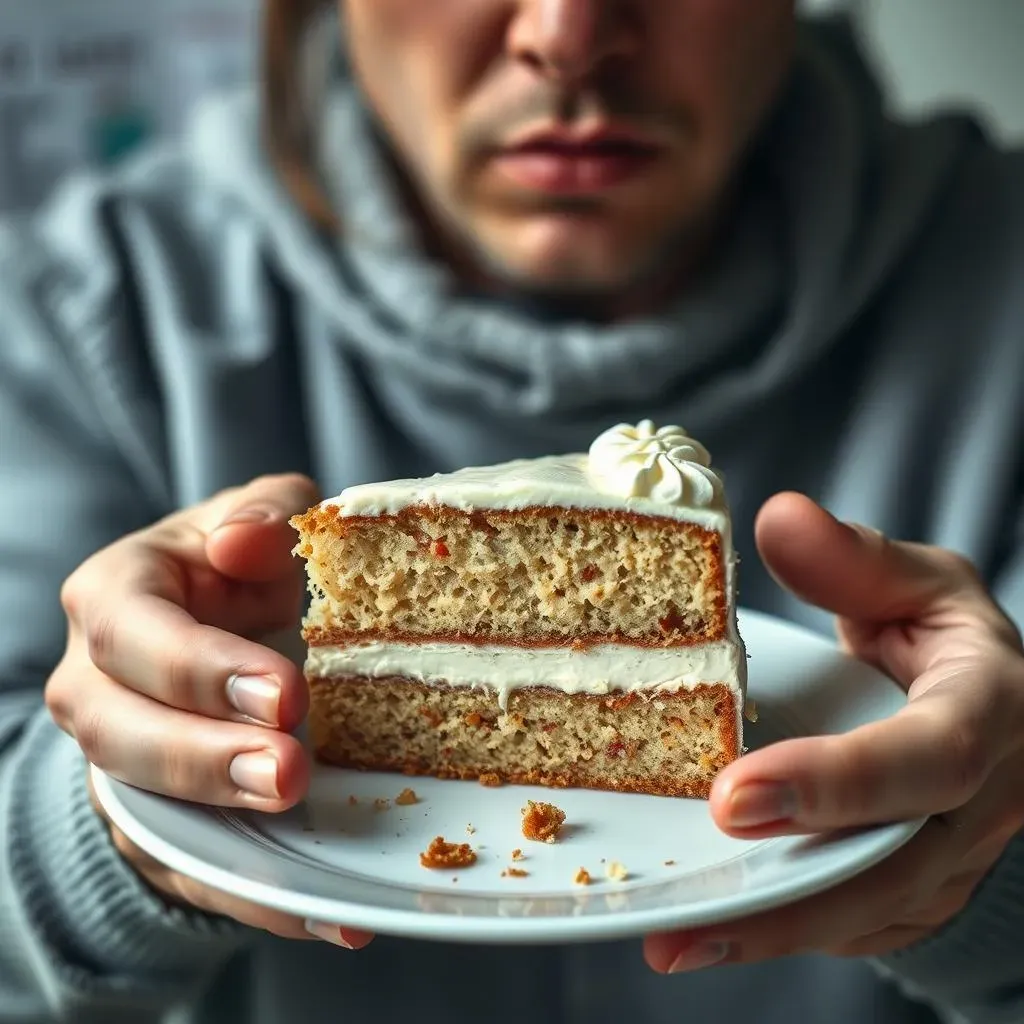Table of Contents
So, you're on the keto diet, diligently tracking macros and enjoying all those delicious keto-friendly meals. Then, BAM! A slice of irresistible cake appears. What happens if you eat cake on keto? This is a question many keto dieters grapple with, and it's a valid one. This article will explore the science behind what happens to your body when you consume carbohydrates outside your keto plan. We'll break down the impact on ketosis, the fat-burning process that's central to the ketogenic diet. We'll also look at how to manage your keto journey after indulging in a bit of cake, offering strategies to get back on track quickly and efficiently. Finally, we'll discuss preventative measures to help you avoid future "cake crises" and maintain your keto progress. Whether you've already had that tempting slice or are simply curious about the effects, this article provides clear answers and practical advice. Prepare to learn how to navigate those occasional sweet cravings while sticking to your keto goals.
What Happens If I Eat Cake on Keto: The Science Behind It
What Happens If I Eat Cake on Keto: The Science Behind It
The Ketogenic State: A Delicate Balance
Let's talk about ketosis, the metabolic state where your body burns fat for fuel instead of carbs. When you're in ketosis, your liver produces ketones, which become your body's primary energy source. Eating a ketogenic diet—low carb, moderate protein, high fat—keeps you in this fat-burning zone. Think of it like this: your body's a car, and it normally runs on gasoline (carbohydrates). Keto is like switching to a different fuel source, biodiesel (fat), and it works pretty well. But suddenly introducing a sugary cake is like pouring regular gasoline into your biodiesel engine – it throws everything off. The carbs in that cake trigger a surge in insulin, a hormone that signals your body to store fat and use glucose for energy.
Now, the amount of carbs in that cake will determine how much your body's metabolic processes are affected. A tiny bite of cake might cause a minor disruption, but a whole cake? That's a different story. It's not just about the immediate impact either. The more carbs you eat, the longer it takes your body to get back into ketosis. This is why mindful snacking is important. If you're curious about keto-friendly desserts, there are many delicious recipes available online, such as keto-friendly cake recipes that can satisfy your sweet tooth without derailing your progress.
Carb Source | Approximate Carbs (per serving) | Impact on Ketosis |
|---|---|---|
Standard Cake Slice | 20-40g+ | Significant disruption, potential exit from ketosis |
Keto-Friendly Cake (small portion) | 5-10g | Minimal disruption |
The Insulin Response and Glucose Metabolism
When you eat that cake, the carbohydrates are broken down into glucose, your body's preferred energy source. This glucose triggers a release of insulin, which helps shuttle the glucose into your cells for energy. This is perfectly normal bodily function. However, on a keto diet, your body is already adapted to use fat for fuel. The sudden influx of glucose from the cake throws a wrench into this finely tuned system. Your body prioritizes using the readily available glucose, and the fat-burning process is temporarily halted. Think of it as a sudden change in traffic flow: your body’s efficient fat-burning highway is suddenly congested with glucose traffic. It's not necessarily harmful, but it's definitely a detour from your keto goals. It's important to remember that moderation is key. A small indulgence won't necessarily ruin your progress, but consistent high-carb consumption will certainly hinder it. It's all about balance!
This isn't to say you should never have a treat. The key is to be mindful. If you're planning a cheat day or a special occasion where cake is involved, consider having a smaller portion, or choosing a keto-friendly alternative. For instance, you could try making a keto cake at home to better control the ingredients and limit your carb intake. This allows for a treat while minimising the impact on your ketosis. Remember, consistency is key, but an occasional treat won't derail your entire journey.
- Insulin levels spike
- Glucose becomes primary fuel source
- Ketone production decreases
- Fat burning slows down
What Happens If I Eat Cake on Keto: Impact on Ketosis
What Happens If I Eat Cake on Keto: Impact on Ketosis
The Impact of Cake on Ketosis
Okay, so you've eaten cake while on keto. What now? The main thing to understand is that the carbs in that cake directly affect your body's ability to stay in ketosis. Remember, ketosis is all about your body using fat for fuel instead of carbs. When you eat carbs, your body switches back to using glucose for energy. The more carbs, the longer it takes to get back into ketosis. It's like flipping a light switch; it's not instantaneous. The size of the cake and its carb content determine the impact. A small bite might cause only a minor blip, while a whole cake could disrupt ketosis for a while. Think of it like this: your body's a finely tuned machine, and those extra carbs are throwing a wrench in the works. But don't panic; it's not the end of the world! You can totally recover and get back on track.
Let's talk specifics. The primary way cake impacts ketosis is through the insulin response. Insulin is a hormone that helps your body store glucose. When you eat cake, your blood sugar and insulin levels spike. This signals your body to stop burning fat and start using glucose for energy. This temporarily shuts down the production of ketones, those magical molecules that power your ketogenic journey. The severity depends on how many carbs are in the cake. A small, keto-friendly keto cake will have a much smaller effect than a traditional, high-carb cake. But either way, it's a temporary disruption. Your body is incredibly adaptable, and it will eventually return to its fat-burning state once the excess glucose is processed.
- Increased blood sugar
- Elevated insulin levels
- Reduced ketone production
- Temporary shift from fat burning to glucose utilization
How Long Does It Take to Get Back Into Ketosis?
This is a question many keto-ers have. The truth is, there's no single answer. It depends on a few factors, mostly how many carbs were in the cake and your individual metabolism. Some people might bounce back in a day, while others might take a few days. Don't beat yourself up if it takes longer than expected. The key is to get back to your regular keto diet as soon as possible. Focus on low-carb meals, stay hydrated, and listen to your body. If you're struggling to get back into ketosis, consider consulting a healthcare professional for personalized advice.
To help speed things along, continue to focus on your ketogenic diet. Stick to your usual low-carb, high-fat meal plan. Stay hydrated by drinking plenty of water. Electrolytes are also crucial, especially if you're experiencing any symptoms like fatigue or headaches. Consider supplementing with electrolytes if needed. Remember, consistency is key. One piece of cake won't derail your entire progress, as long as you get back to your keto diet quickly. If you're looking for sweet treats that won't knock you out of ketosis, explore some delicious keto cake options. A little planning can help you satisfy your cravings without derailing your progress.
Factor | Effect on Recovery Time |
|---|---|
Amount of carbs consumed | Higher carbs = longer recovery |
Individual metabolism | Faster metabolism = quicker recovery |
Consistency with keto diet after indulgence | Quick return to keto = faster recovery |
What Happens If I Eat Cake on Keto: Managing Your Keto Diet After a SlipUp
What Happens If I Eat Cake on Keto: Managing Your Keto Diet After a SlipUp
Don't Panic! It's Not the End of the World
Okay, so you've had some cake. First things first: don't beat yourself up! It happens. The keto diet isn't about perfection; it's about progress. One slice of cake won't undo all your hard work. Seriously, it won't. The most important thing now is to get back on track. Don't let one slip-up turn into a full-blown binge. Think of it as a minor detour on your keto journey, not a complete crash. Focus on the positive aspects of your progress thus far and remember your goals. You've got this!
The next step is to get back to your regular keto meal plan as soon as possible. Don't try to compensate by starving yourself; that's counterproductive. Instead, focus on nutrient-dense, low-carb meals. Plenty of healthy fats and moderate protein will help your body recover and get back into ketosis. Remember those delicious keto-friendly cakes we talked about earlier? Maybe swap out that sugary treat for a healthier alternative next time you get a craving.
- Resume your regular keto meal plan
- Focus on nutrient-dense, low-carb foods
- Avoid extreme calorie restriction
- Stay hydrated
Hydration and Electrolytes: Your Secret Weapons
When you eat a lot of carbs, your body can lose electrolytes, like sodium, potassium, and magnesium. This can lead to unpleasant side effects like headaches, fatigue, and dizziness – things you definitely don't want to experience while trying to get back on track! So, make sure you're drinking plenty of water to stay hydrated. Consider adding a pinch of salt to your water to help replenish your sodium levels. You might also consider electrolyte supplements if you're experiencing significant symptoms.
Electrolytes play a vital role in several bodily functions, including muscle contractions, nerve impulses, and fluid balance. When you're in ketosis, your body's electrolyte balance can be a little more delicate, and a high-carb indulgence can throw it off even further. Replenishing these lost electrolytes is crucial for feeling your best and getting back into a state of ketosis as quickly as possible. Don't underestimate the power of hydration and proper electrolyte balance. They're often overlooked, but they're essential for a smooth keto journey. If you are interested in keto-friendly baking, take a look at these keto cake recipes for delicious alternatives.
Electrolyte | Importance | Sources |
|---|---|---|
Sodium | Fluid balance, nerve impulses | Salt, broth |
Potassium | Muscle function, blood pressure | Avocados, spinach |
Magnesium | Energy production, muscle relaxation | Almonds, dark chocolate |
Listen to Your Body and Don't Give Up!
Your body is your best guide. Pay attention to how you feel. If you're experiencing any negative side effects after eating cake, like fatigue, headaches, or digestive upset, take it easy. Rest, hydrate, and prioritize getting back to your keto meal plan. Remember that the keto diet is a marathon, not a sprint. There will be bumps in the road, but those bumps don't define your journey. What matters is that you get back up and keep going. Don't let one slip-up derail your overall progress. You've come too far to give up now!
Remember, consistency is key. While an occasional indulgence won't necessarily ruin your progress, it's important to get back on track as quickly as possible. Focus on your overall progress and don't get discouraged by a temporary setback. The keto diet is a lifestyle change, and like any lifestyle change, it takes time, patience, and self-compassion. You’re doing great, keep up the fantastic work! Looking for some delicious keto-friendly alternatives? Check out these amazing keto cake recipes that won't derail your progress.
What Happens If I Eat Cake on Keto: Tips for Avoiding Future "Cake Crises"
What Happens If I Eat Cake on Keto: Tips for Avoiding Future "Cake Crises"
Planning Ahead: The Power of Preparation
Let's be real, cake cravings happen. The best way to avoid a full-blown keto disaster is to plan ahead. Before you head to a party or social event, check the menu beforehand. If you know there'll be cake, you can mentally prepare yourself and make a conscious decision about how much (if any) you'll indulge. Perhaps you can enjoy a small portion, savoring each bite, rather than letting yourself go completely overboard. Remember, moderation is key. This approach helps you to stay in control and avoid those moments of impulsive overindulgence. It also allows you to make informed choices and to savor your treat without regret.
Another helpful strategy is to always have keto-friendly snacks on hand. If you're feeling a sugar craving, reach for a healthier alternative, such as some berries with a dollop of heavy cream or a small piece of dark chocolate. This prevents you from resorting to less healthy choices when hunger strikes. If you’re struggling to find keto-friendly desserts, there are tons of great resources online, like these keto cake recipes. A little prep goes a long way in preventing those unplanned cake-related incidents.
- Check menus in advance
- Plan portion sizes
- Keep keto-friendly snacks handy
- Make informed choices
Mindful Eating: Savor, Don't Devour
When you do decide to have a small piece of cake, practice mindful eating. This means paying attention to your food, savoring each bite, and noticing your body's cues. Don't just mindlessly shovel cake into your mouth; instead, take your time, chew slowly, and appreciate the taste and texture. Mindful eating helps you to connect with your food on a deeper level and to recognize when you're truly satisfied. This can help you to avoid overeating. It’s all about enjoying the moment, not just the calories.
Often, those cravings are more about emotional needs than physical hunger. Consider what might be triggering your craving. Are you stressed, bored, or simply seeking a bit of comfort? Address the underlying emotional need before turning to food. If you’re finding yourself constantly craving sweets, you might want to explore some keto cake recipes to satisfy your cravings in a healthier way. Remember, mindful eating is a powerful tool for managing cravings and maintaining a healthy relationship with food. This approach encourages a more balanced and sustainable approach to the keto diet.
Mindful Eating Technique | Benefit |
|---|---|
Slow chewing | Promotes digestion, increases satisfaction |
Paying attention to taste and texture | Enhances enjoyment, reduces mindless eating |
Recognizing satiety cues | Prevents overeating |
